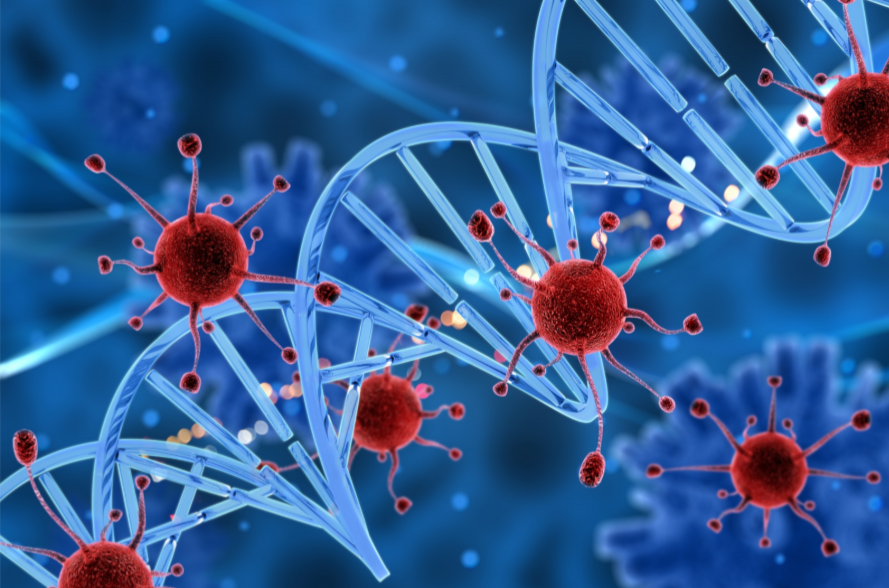
What Role Does Interleukin 2 Play In Immunotherapy?
Immunotherapy has revolutionized the manner in which doctors are handling cancer and other severe illnesses. Speaking of which, it has introduced a new dawn of hope by training the natural body’s immunity to treat itself.
As opposed to chemotherapy and radiation, which directly kill dangerous cells, immunotherapy uses natural defenses but makes them more effective. Central to this revolution is Interleukin-2 (IL-2), a potent signaling molecule also known as a cytokine that actually stimulates immune activity.
Identified in the 1970s, it became one of the first immune-based immunotherapies to be developed and approved for certain cancers decades ago.
Although its initial applications exhibited both breathtaking results and significant difficulties, IL-2 remains a fundamental element of immunotherapy research to the present day.
Furthermore, more than a treatment, it has also served as a model for developing new therapies that influence immunity.
Wondering how IL-2 is influencing modern care?
Read on to learn more.
1. Activating T Cells to Greater Anti-Tumor Response
Interleukin 2 is a potent T cell growth factor. In immunotherapy, it can be utilized to enlarge the number of cytotoxic T lymphocytes (CTLs) that directly destroy cancer cells.
It activates and causes the rapid proliferation of T-cells by binding to IL-2 receptors. As a result, it enhances the recognition of tumor-associated antigens and the destruction of malignant cells by the immune system.
Moreover, in immunotherapies such as high-dose IL-2, the cytokine is used to coordinate an intense attack by the immune system against tumors. However, this must be carefully administered as there are limitations in how it is tolerated.
2. Improving Natural Killer (NK) Cell Activity
In addition to T cells, IL-2 is also a powerful stimulator of natural killer (NK) cells, which are also important in innate immunity. In this context, NK cells recognize tumor cells and virus-infected cells without prior exposure to antigens.
The application of IL-2 immunotherapy further enhances the NK cell cytotoxicity, which aids the destruction of cancer cells that T-cells cannot recognize. Studies also indicate that IL-2 treatment enhances the infiltration of NK cells into cancer cells, boosting both the innate and adaptive immune responses against cancer.
3. Promoting Adoptive Cell Therapy (ACT)
IL-2 plays an important role in adoptive cell therapies, including tumor-infiltrating lymphocyte (TIL) therapy and chimeric antigen receptor (CAR) T-cell therapy. In such procedures, immune cells of the patients are grown and proliferated in the laboratory and then reinfused.
During the culture process, IL-2 is used to produce large numbers of functional T cells that can be utilized to target cancer. Also, IL-2 is sometimes (after infusion) administered systemically to allow the transferred cells to persist and continue their tumor-eliminating process within the patient.
This dual support capacity, ex vivo expansion and in vivo support make IL-2 an essential component in cell-based immunotherapy combinations.
4. Enhancing Memory T-Cell Production
Among the most critical objectives of immunotherapy against cancer is the long-term prevention of recurrence. The IL-2 helps to promote the generation of memory T cells, which will still be capable of detecting cancer antigens long after treatment.
These memory T cells also offer long-lasting surveillance and reduce the risks of relapse. Though it is complicated to strike a balance between the effect of IL-2 and regulatory T cells, efforts to modify IL-2 are underway to promote its memory effects and reduce the immunosuppressive effect.
5. Addressing Immune Suppression in the Tumor Microenvironment
The tumor microenvironment (TME) frequently restrains the immune system by using regulatory T cells (Tregs) and inhibitor signals. IL-2 acts against this suppression by enhancing effector T cells and NK cells.
Yet, IL-2 shows a paradoxical effect: it may cause either an expansion of Tregs and consequent dampening of immune responses. To tackle this, scientists are in the process of producing designer IL-2, which can differentially activate their effector T cells over Tregs.
These developments will transform IL-2 into a more targeted immunotherapy drug that can defeat immune resistance in cancer.
See also: The Advantage of Comprehensive Employee Health Coverage
6. Broadening Clinical Use Beyond Cancer
The immunomodulatory characteristics of IL-2 are not restricted to oncological applications. In autoimmune diseases, low-dose IL-2 administration has been explored as a potential method of restoring immune balance by selectively enhancing Tregs. It has been shown to limit harmful autoimmunity.
Additionally, clinical trials are underway to test IL-2 in diseases such as type 1 diabetes, lupus, and graft-versus-host disease. That said, high-dose IL-2 is still an option for some patients with advanced melanoma and kidney cancer, but newer formulations and methods are making it safer and more effective.
7. Next-Generation IL-2 Therapies: Engineered Cytokines, Combinations
Conventional high-dose IL-2 therapy is effective but also causes significant toxicities, including the development of capillary leak syndrome. To address this shortcoming, newer IL-2 variants are being designed.
These engineered cytokines aim to activate effector immune cells selectively, spare overstimulation of Tregs, and limit toxicity. Some are fused with antibodies (immunocytokines) to target tumors directly, while others are used in combination with immune checkpoint inhibitors (i.e., anti-PD-1/PD-L1 treatments).
These combinations have demonstrated support in enhancing immune activation and a positive patient outcome in clinical trials.
Conclusion
Interleukin-2 is more than just a historical milestone in immunotherapy—it’s a continuing force that bridges past discoveries with future innovations. From boosting T-cell growth to reshaping NK activity and fueling adoptive cell therapies, IL-2 proves that one molecule can influence countless treatment pathways.
Also, researchers are fine-tuning its power, designing smarter versions that maximize anti-tumor impact while minimizing toxicity. So, whether in cancer care or autoimmune balance, IL-2 stands as both therapy and teacher, guiding the evolution of modern medicine.
Ultimately, it shows us that the path to stronger immunity may lie in reimagining the body’s own messengers.




